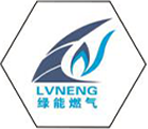
Dec . 20, 2024 02:21
Back to list
pneumatic control valve
Understanding Pneumatic Control Valves Functionality and Applications
Pneumatic control valves are crucial components in various industrial applications, particularly those that involve the regulation of airflow and pressure. These valves are designed to control the flow of compressed air in pneumatic systems, acting as the control point for actuators and other devices. They play a vital role in enhancing the efficiency, precision, and safety of machinery operations.
The Basics of Pneumatic Control Valves
A pneumatic control valve operates by regulating the flow of compressed air or gas through a system. It functions through a manual or automatic mechanism that opens, closes, or partially obstructs the pathway of the air. The critical components of a pneumatic valve include an actuator, valve body, and control mechanism. The actuator often consists of a piston or diaphragm that responds to input signals, causing the valve to change its position accordingly.
Pneumatic control valves can be classified into several types, including globe valves, ball valves, and check valves, each offering unique advantages based on the application. For instance, globe valves are excellent for throttling purposes due to their ability to control the flow rate precisely, while ball valves provide fast on/off capabilities with minimal resistance.
Operating Principles
The operation of a pneumatic control valve is typically monitored and controlled by an electronic or mechanical system. A control signal, often in the form of a voltage or pneumatic pressure, is sent to the actuator. Depending on the signal's magnitude, the actuator will move the valve to open, close, or adjust the flow of air. This feedback mechanism ensures that the system can maintain the desired pressure and flow rates, which are critical for the optimal functioning of pneumatic devices.
Automation has played a significant role in the evolution of pneumatic control valves. Modern systems employ various sensors and controllers, enabling real-time monitoring and adjustment of pressure and flow rates. This level of automation enhances not only operational efficiency but also safety, reducing the risks associated with manual control.
Applications of Pneumatic Control Valves
pneumatic control valve

Pneumatic control valves find applications across various industries due to their reliability and efficiency. In manufacturing, they are commonly used in assembly lines, where they control the movements of pneumatic actuators that handle tools or materials. The automotive industry relies on these valves for processes such as painting and clamping, where precise control of airflow is essential for achieving consistent results.
Moreover, the packaging industry utilizes pneumatic control valves for filling and sealing processes, ensuring that products are efficiently packaged without leaks or defects. In the food and beverage sector, these valves are instrumental in maintaining hygiene and avoiding contamination during production processes.
In the construction and mining industries, pneumatic control valves serve critical roles in driving heavy machinery, including drills and excavators. The ability to control large volumes of air efficiently allows for more robust and effective operations.
Advantages of Pneumatic Control Valves
One of the primary benefits of pneumatic control valves is their simplicity and reliability. They are generally more straightforward than electrical systems, which makes maintenance and troubleshooting easier. Additionally, pneumatic systems can operate in hazardous environments where electrical components might pose risks, as they are not prone to sparks.
Another advantage is the speed at which these valves can operate. Pneumatic control valves can respond quickly to control signals, allowing for rapid changes in flow and pressure, which is crucial in applications requiring immediate response.
Furthermore, pneumatic systems often require less energy compared to their electric counterparts. Compressed air can be generated relatively easily, making it a cost-effective solution in many industrial processes.
Conclusion
Pneumatic control valves are integral to the functioning of pneumatic systems across various industries. Their ability to regulate airflow and pressure precisely enhances productivity and safety in numerous applications. As automation continues to evolve, the future of pneumatic control valves looks promising, with advancements leading to even greater efficiency and reliability. Understanding the fundamentals of these valves allows industries to harness their full potential, driving innovation and operational excellence.
Latest news
-
Safety Valve Spring-Loaded Design Overpressure ProtectionNewsJul.25,2025
-
Precision Voltage Regulator AC5 Accuracy Grade PerformanceNewsJul.25,2025
-
Natural Gas Pressure Regulating Skid Industrial Pipeline ApplicationsNewsJul.25,2025
-
Natural Gas Filter Stainless Steel Mesh Element DesignNewsJul.25,2025
-
Gas Pressure Regulator Valve Direct-Acting Spring-Loaded DesignNewsJul.25,2025
-
Decompression Equipment Multi-Stage Heat Exchange System DesignNewsJul.25,2025

